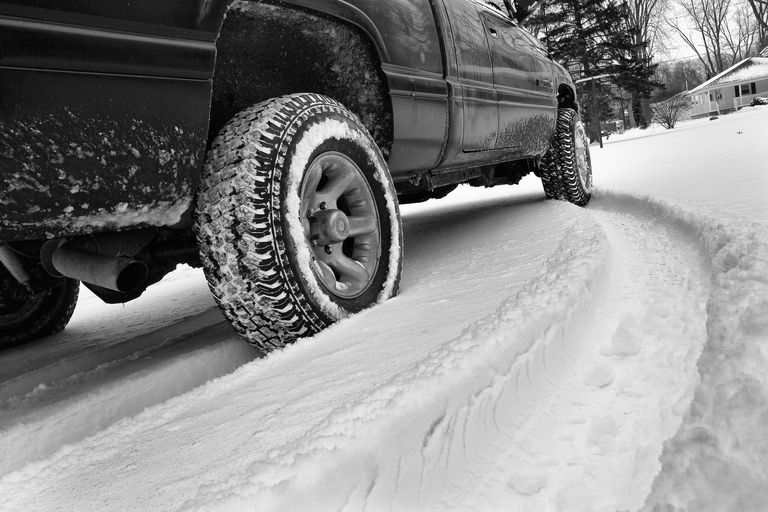
Snow Tyres FAQ

Q: What makes snow tires different from all-season tires?
A: Snow tires, also known as winter tires, have tread patterns specifically designed to dig down and bite into snow and ice, plus they are made out of softer rubber compounds that retain their flexibility in cold weather, allowing the tire to better conform to the surface of the road. Regular tires tend to get hard and brittle in cold temperatures. As a result, winter tires keep a better grip on snowy and icy surfaces than regular all-season or summer tires. Grip is critical, not just to avoid getting stuck, but to ensure that the car can stop and steer. Life-saving safety technologies such as antilock brakes, electronic stability control and all-wheel-drive can't do their jobs if the tires don't maintain their grip on the road surface.
Q: My car has all-season tires. Aren't those good enough?
A: All-season tires, which are also known as all-weather tires, are designed to cope with all sorts of conditions, including dry roads and rain, but are not optimized for any one condition. They are generally made from harder materials that don't conform to the road surface as well in low temperatures. Think of all-season tires as sneakers and snow tires as heavy-duty snow boots. Sure, it's possible to walk down a snowy, icy sidewalk wearing sneakers, but proper snow boots make it a lot easier (and safer).
Q: Can I put snow tires on just the drive wheels of my car?
A: Putting just two snow tires on your car is a bad idea. If you have a front-wheel-drive car and put snow tires on the front only, the back wheels won't have anywhere near as much grip as the front wheels. This will make the car much more likely to spin out while braking or cornering. Likewise, if you put snow tires on the just back wheels of a rear-wheel-drive car, the wheels that do the steering won't grip as well as those that provide the power, so the car may not respond when the steering wheel is turned -- it will simply plow straight ahead. Always install snow tires on all four wheels.
Q: Can I leave my snow tires on all year?
A: You can, but it's not a good idea. Snow tires tend to be noisier, plus the softer compounds from which they are made means they will wear out faster, especially in warm weather. Wear is critical because winter tires rely on their deep tread to dig into snow and ice. As soon as the snow is gone for good, remove your snow tires and reinstall your regular tires.
The good news: Since you're savvy enough to use snow tires, you don't need to stick with the all-season tires that came with your car for the rest of the year. You can simply choose a "summer" tire that will provide better handling, better traction in the rain, or a smoother, quieter ride.
Q: Unmounting one set of tires and mounting another at the beginning and end of winter is a pain. Is there an easier way?
A: Yes! Buy an extra set of wheels from a salvage yard and use those for your snow tires. The wheels don't have to be the exact same design, so long as they are the same diameter and have the same bolt pattern as your car's original wheels. If you've purchased aftermarket wheels, keep the stock wheels and use those for your snow tires. That way, when it comes time to change from summer tires to snow tires, all you have to do is have the wheels changed — a quick and inexpensive job.